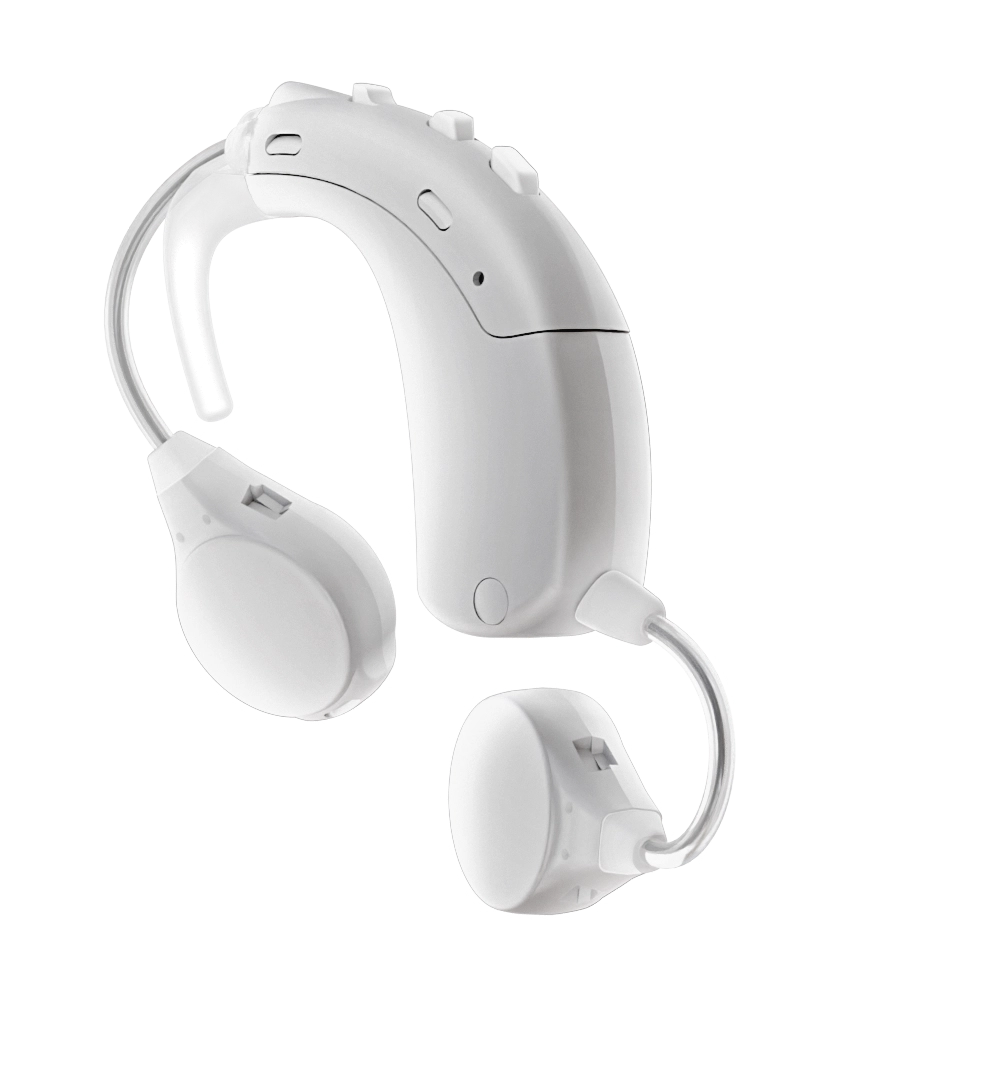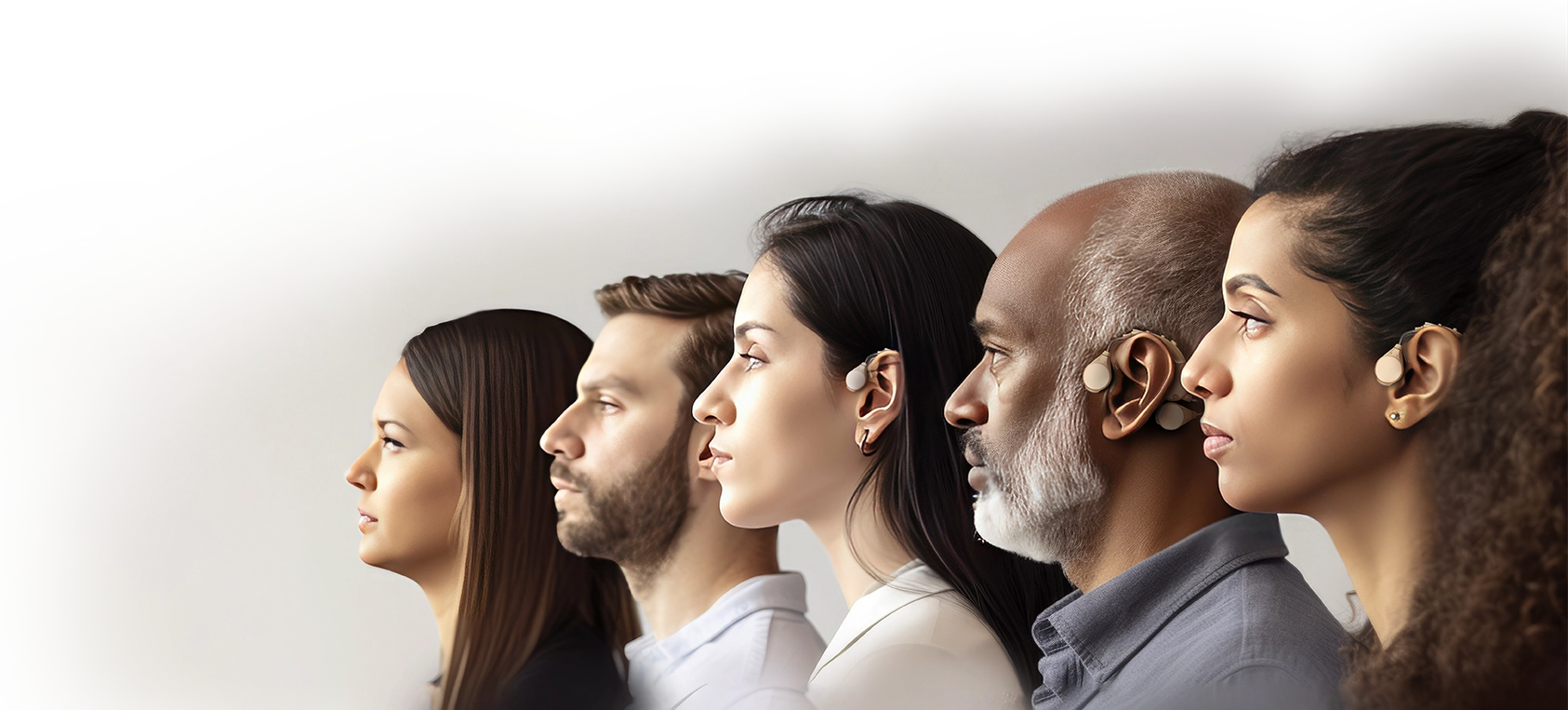Bone conduction
Bone conduction is a natural physiological property discovered as far back as the 16th century.
The process consists of capturing the surrounding sound (or streaming recorded one) and then mechanically converting it into vibratory energy, diffused against the skull by an transducer.
These vibrations then propagate naturally to the cochlea and auditory nerve via the surrounding bones. Thus he sound information reaches the brain, bypassing the usual ossicular chain.
Think of the skull as a resonance box, a hi-fi speaker. The skull is an assembly of fused bony parts, each with its own density and varying degrees of resonance. Mechanical vibratory energy placed in the right place maximizes the vibrations delivered (and therefore the sound) to the auditory system.
Ludwig van Beethoven himself used an archaic bone conduction process to continue composing when he became deaf!
He would take a string from his piano and wind it around a metal or wooden rod. He then clamped this rod between his teeth. The piano's sound vibrations would then travel up the string and, thanks to the rod, be transmitted through the teeth and temporomandibular bone to the cochlea and auditory nerve.
The natural property of bone conduction has now been used in medicine for several decades, mainly for implants. These require invasive surgery.
The challenge now was to use it in a non-invasive device with real effectiveness.
Inclusiveness
One of the main reasons why patients don't get hearing aids is pathological denial. In other words, the hearing-impaired believe they have no hearing loss.
It's true that the main pathology, presbycusis (= cellular aging), is very progressive. It's an inescapable natural phenomenon that affects everyone.
Hearing loss occurs gradually. Hearing-impaired people learn to live with it. They would wait for a significant level of deafness before considering hearing equipment. In the meantime, they may not immediately realize that they are tiring themselves out by having to concentrate more and more in conversations, a fortiori in noisy environments such as restaurants or family dinners.
The second reason for denial is the stigma attached to implants and hearing aids. In the collective imagination, wearing them is often equated with advanced age and even the end of life.
The size of implants and the historical design of hearing aids add to the stigma of disability. Some patients experience it as a shame that must be hidden.
This tendency towards stigmatization has been reinforced by the miniaturization of hearing aids and the commercial discourse extolling the merits of a solution that cannot be seen... sometimes even to the detriment of hearing performance for the patient.
Making the invisible visible
Imagine a world where wearing hearing aids would be the equivalent of wearing glasses: a medical device turned fashion accessory as personality statement!
Wearing hearing aids should be as natural and fashionable as it is for the hearing population, who use in-ear headphones, XXL over-ear headphones or bone conduction headphones for sports all the time.
Attitudes are changing.
So must design and the ability to make devices your own.
This is Sounduct's commitment to the inclusion of the deaf people.






